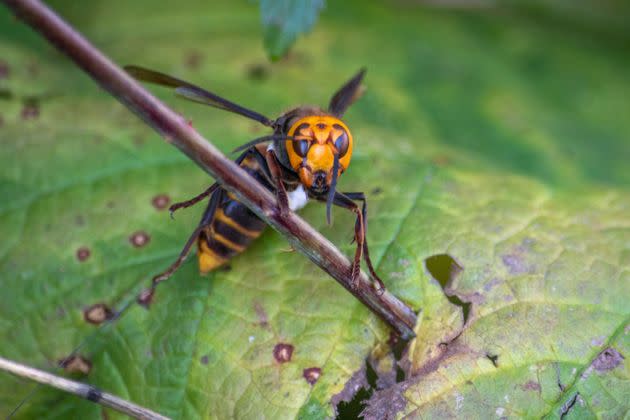Officials Destroy Basketball-Sized Murder Hornet Nest Near Canadian Border
As 2020’s relentless news cycle continues to churn away, bringing us new hellish days of U.S. politics, the COVID-19 pandemic and whatever else is on the news docket on any given day, it’s easy to forget stories from earlier in the year. “Tiger King,”panic-buying toilet paper and that one week where everything was cake have largely left our collective memories.
But as Alanis Morisette once (sort of) said, the murder hornets are here to remind you of the mess they made — and they’re not going away.
That’s right, one of the superstars of the early pandemic news cycle is still here and still causing chaos.

Researchers near Blaine, Washington — a small city close to the U.S.-Canada border — destroyed an Asian giant hornet nest this past weekend.
The basketball-sized nest housed over 100 of the insects known and feared as “murder hornets” and researchers descended upon it with vacuums and sting-proof suits like something out of a sci-fi film.
It was the first nest discovered in the U.S., but the invading insects have been present on Vancouver Island dating back to last year and have subsequently been found in other parts of B.C. and Washington state.
The hornets get their nickname from, well, their love of murdering. A small group of hornets can invade a beehive and kill all of the bees — usually by decapitating them — in a matter of hours.
WATCH: What you need to know about murder hornets in Canada. Story continues below.
Researchers are rushing to find and eliminate as many hornets as possible as the insects enter their most murderous season.
“Asian giant hornets this time of year start going into what we call the slaughter phase,” entomologist Sven-Erik Spichiger told the Seattle Times on Oct. 2.
“They will visit apiaries, basically mark a hive, attack it in force, removing every bee from the hive, decapitating them, killing all of the workers, and then spending the next few days harvesting the brood and the pupae out of...


